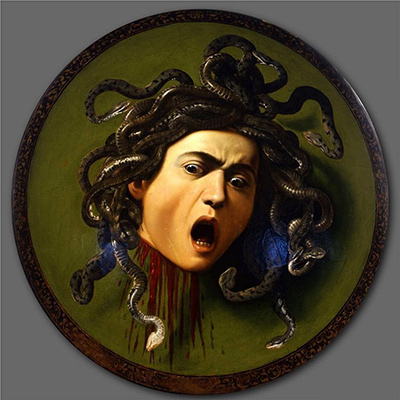Michelangelo Merisi da Caravaggio: the Italian artist, famous for his painting entitled Medusa, lived from 1571-1610.
But Caravaggio was a prolific painter, and Medusa, portraying the Greek mythological head crowned with live snakes, was just one of an extensive portfolio of outstanding paintings.
The style of Caravaggio's art was unique at the time, and he used excessive highlighting of core subjects, often depicted in gruesome poses.
Caravaggio took this name from his hometown in Northern Italy. At the age of 21 he moved to Rome; attracted by this classical capital of art and culture. His early years were lean, as a struggling young artist, he concentrated on still lifes – fruits and flowers. Later he ventured into half-length figures such as The Boy Bitten by a Lizard.
In 1595, Caravaggio's talent was recognised by Cardinal Francesco del Monte, who took him into his household. It wasn't long before Caravaggio received lucrative commissions from the cardinal's acquaintances.
These commissions were of a religious nature and included such masterpieces as; The beheading of St John the Baptist - Christ on the Mount of Olives - The Crucifixion of St. Peter. A lot of Caravaggio's art depicted bloodthirsty scenes, as in - David with the Head of Goliath.
Caravaggio was a fast and skilled artist, but like a lot of artists he had an unbalanced character. In between his creative spells, he would behave like a drunken lout for extended periods of time; getting into arguments and fights.
Arrested on many occasions for anti-social behaviour, in 1606 Caravaggio went too far when an argument with a young man escalated into a sword fight during which the young man was stabbed and died from his injuries.
To escape justice, Caravaggio fled to the isle of Malta and joined the Knights of Malta.
Eventually, his temper got him expelled from this military order, and he travelled to Sicily. Friends in Rome had petitioned the Pope to arrange a pardon for Caravaggio, but on his return journey, he died of a fever, aged just 38.




